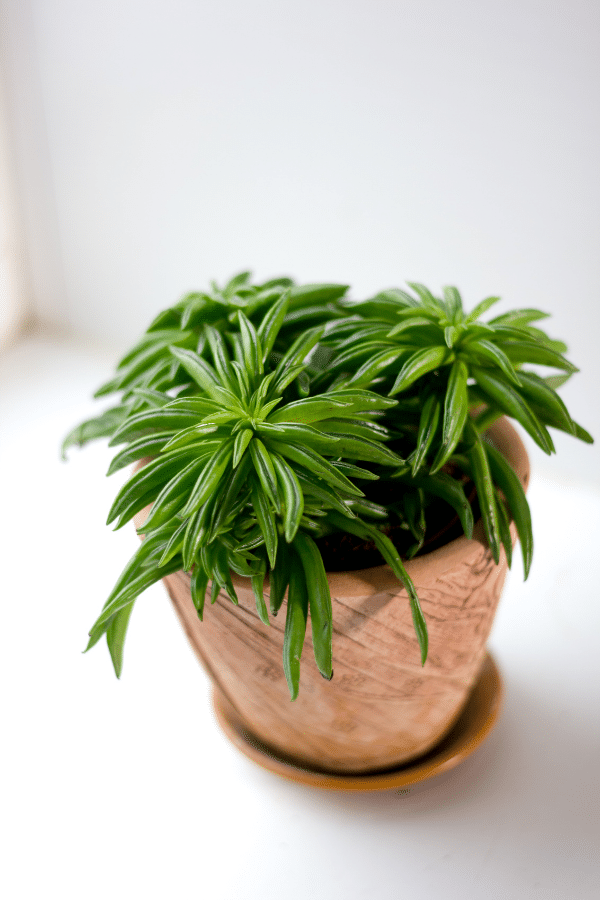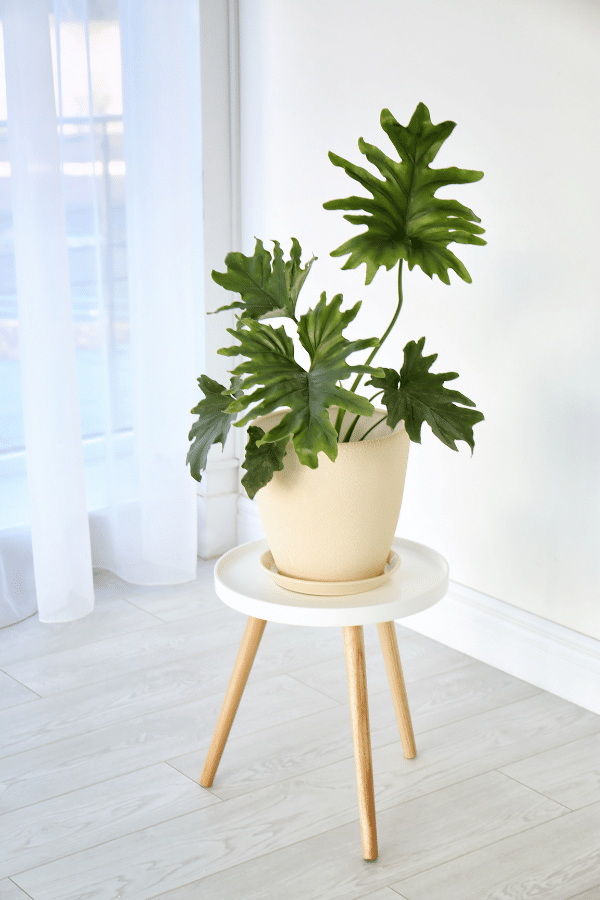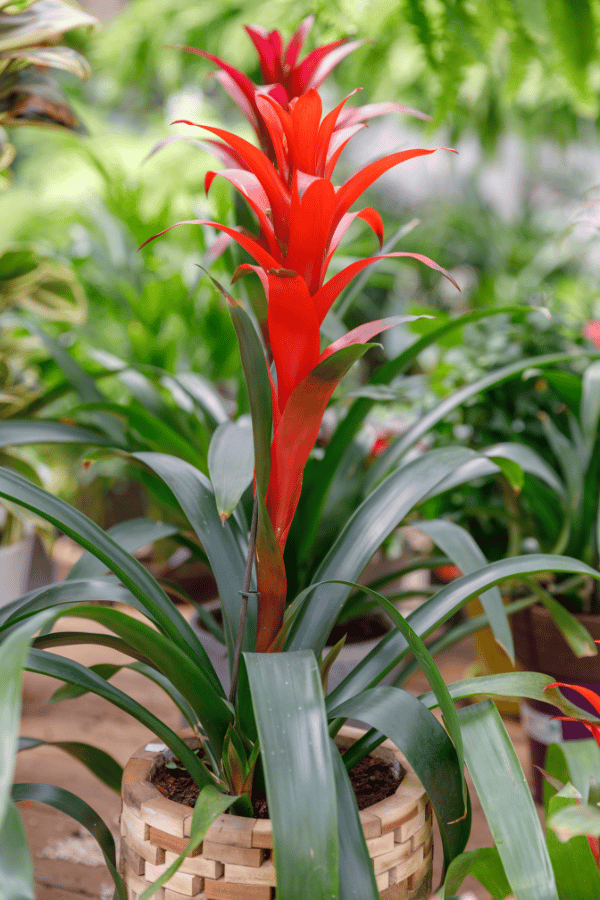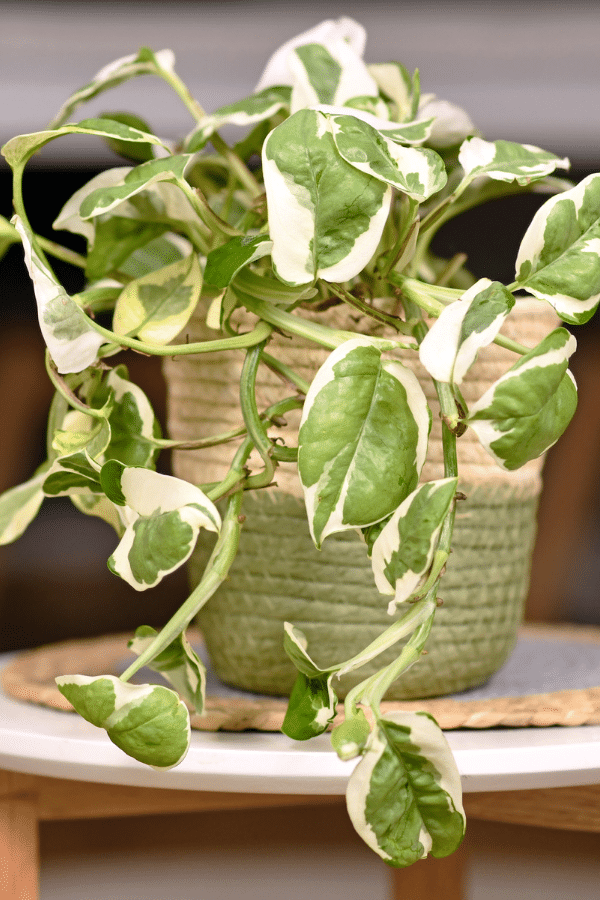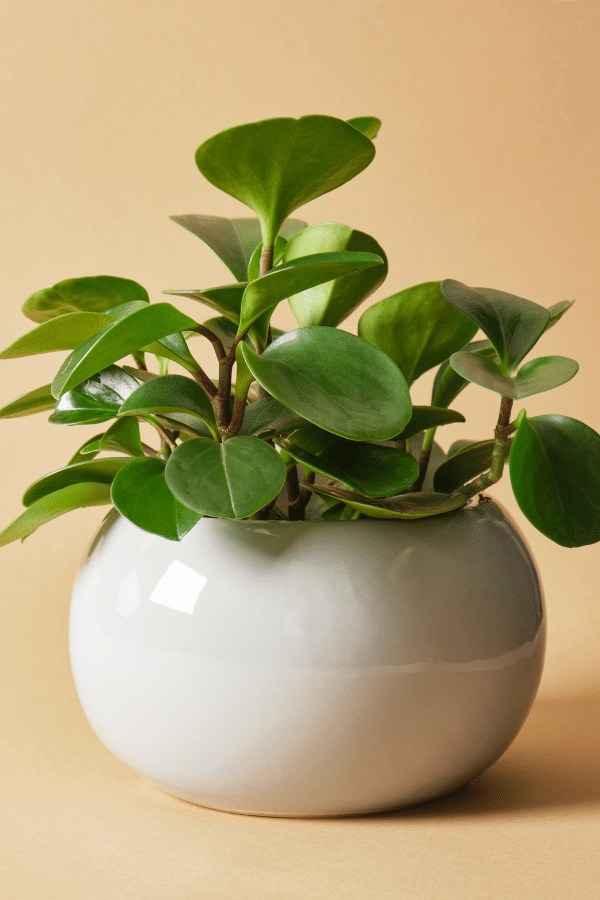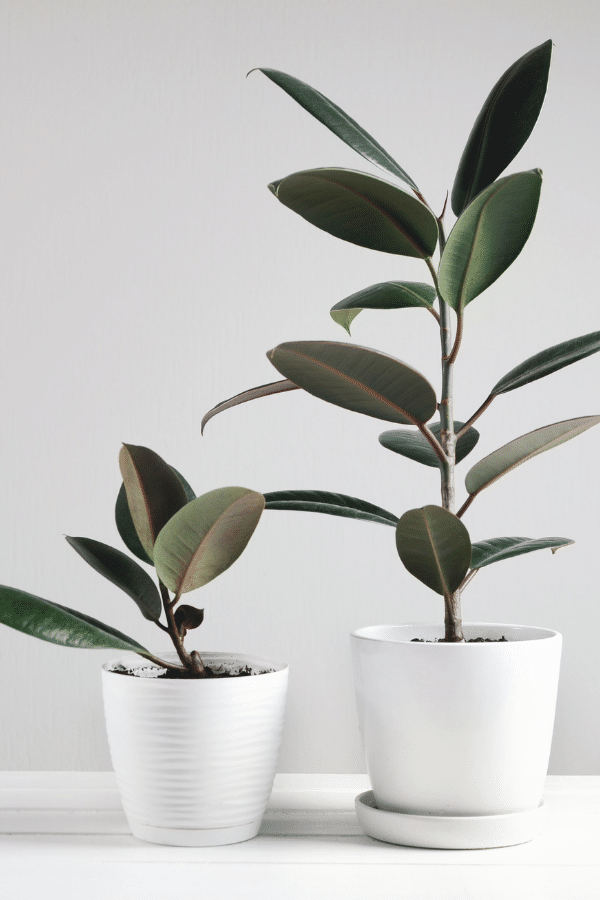Chinese Fan Palm
Scientific Name: Livistona Chinensis
Common Name: Chinese Fan Palm, Fountain Palm
Chinese Fan Palm care is an easy houseplant to care for. This plant has beautiful cascading leaves and grows very tall in its native environment. This is a slow-growing plant but be sure to give it a spot to grow tall and wide.
Quick Care Overview
| Common Name | Chinese Fan Palm, Fountain Fan Palm |
| Scientific Name | Livistona Chinensis |
| Family | Arecaceae |
| Origin | Southeast Asia |
| Identification | Deep green, coarse fan-shaped leaves |
| Height | 10-50 feet tall |
| Soil | Sand, clay, or loam with ample drainage |
| Water | Allow top two inches of soil to dry out before watering |
| Temperature | 15-85F |
| Sunlight | Bright, indirect sunlight |
| Toxic to Cats & Dogs | No |
| Toxic to Humans | No |
| Pests | Scale, spider mites |
| Diseases | Potassium nutrient deficiency |
Below we will dive deep into how to care for Chinese Fan Palm.
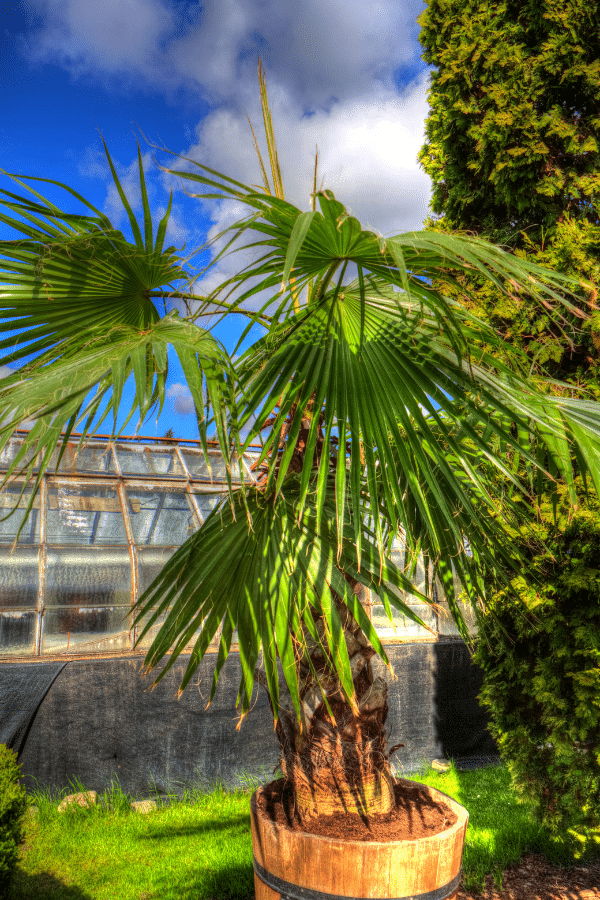
Chinese Fan Palm History
Livistona Chinensis, otherwise known as the Chinese Fan Palm or Fountain Palm belongs to the Arecaceae family and is a popular choice amongst home gardeners for indoor container growing. This Southeast Asia native possesses rich cascading foliage with arching fronds that shower downwards. The regal appearance of the lush foliage of this Palm adorning a sleek trunk has earned it the Royal Horticultural Society Award of Garden Merit. Chinese fan palms are semi-hardy tropical plants that are very tolerant of a variety of growing conditions – making this Palm a great choice for beginners.
Chinese Fan Palm Identification
A Chinese Fan Palm can be identified by its deep-green, coarse-textured, fan-shaped leaves. Leaves of this palm possess thin lobes, arched tips, and may grow up to 6 feet in length. The leaves are attached by stiff, serrated petioles to a sleek trunk that can reach nearly 12 inches in diameter. Especially when grown as a potted plant, it is not uncommon for a Chinese fan palm to have multiple trunks.
Chinese Fan Palm Growth Facts
Chinese Fan Palm is a slow-growing plant in its natural environment. When grown as a houseplant, it is still a slow-growing plant. Give it a spot in your house with enough space where it can grow tall and wide.
How Big Does a Chinese Fan Palm Get?
Chinese Fan Palms may reach 30-50 feet tall outdoors with a 10–12 foot spread on average. Chinese Fan Palms grown as houseplants will reach a maximum average height of 10 feet tall indoors.
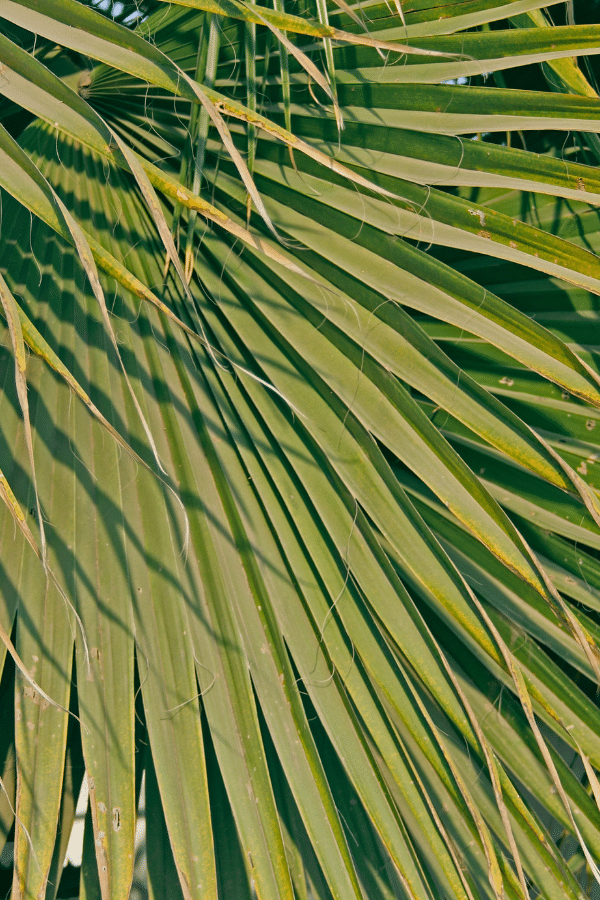
Chinese Fan Palm Care
With proper Chinese Fan Palm care, you can have a healthy growing palm houseplant.
Best Soil for Chinese Fan Palm
The Chinese Fan Palm will tolerate a variety of soil types including sand, clay, and loam as long as there is ample drainage. They will thrive in soil that is high in organic matter with a slightly acidic to neutral soil pH. A quality potting mix, especially those made for palms, will suit the indoor palm quite nicely.
Chinese Fan Palm Fertilizer
These Palms appreciate a good feeding two to three times a year to promote fast and healthy growth. Apply a palm fertilizer from late winter to early fall, following label instructions. An organic mulch, such as pine bark included in the soil will help give the palm a growing boost.
Chinese Fan Palm Watering
Soil that is lightly moist, but not soggy is ideal for Chinese Fan Palms. Watering needs will be dependent upon indoor growing conditions and light intensity. The more dry and higher the light intensity, the more water the palm will be. The higher the humidity and lower the sunlight the palm receives, the less water it will need. Good drainage for this plant is of utmost importance. Mature Chinese Fan Palms will have some drought tolerance, especially when not actively growing in winter. However, during the heat of spring and summer potted indoor plants may need as much as two to three watering sessions per week. Be sure to not let the plant get soggy soil.
Chinese Fan Palm Light Requirements
These Palms do best located by a bright window with indirect light. This plant should be kept away from air vents, heaters, and drafts, as they are very sensitive to dry air and are not very tolerant of sudden changes in temperature. If planted outdoors, they do best in partial shade.
Chinese Fan Palm Temperature & Humidity
Palm trees thrive in warm, humid environments. Chinese Fan Palms will enjoy a cool-mist humidifier, regular misting, or a pebble tray under the plant’s container to create humidity around the plant. Being a hardy palm, Chinese Fan Palms can survive temperatures as low as 15 to 20 degrees Fahrenheit, which is why a ton of people plant Chinese Fan Palms outside. But be aware that temperatures this low may cause some damage to foliage. Being a tropical plant, they can also survive high temperatures up to 85F. The humidity of a Chinese Fan Palm likes to be held around 40-50%.
Repotting Chinese Fan Palm
To grow your Chinese Fan Palm in a container as a houseplant, select a pot that is slightly larger than the plant’s root ball. It is pertinent that the container has ample drainage holes. Repotting of these slow-growing palms will not be often necessary. A good rule of thumb is to leave the plant in the pot for at least 3 years. The roots of the Chinese Fan Palm can be easily damaged and are very fragile. It will become obvious that this palm will need a larger container when you observe roots growing out of the drainage holes and above the soil line. To repot, simply ease the palm’s root ball out of its container and plant it at the same depth in the new larger container. Fill the new container with fresh palm potting mix and gently tamp down the soil. Always water the palm thoroughly after repotting.
Chinese Fan Palm Maintenance & Pruning
Pruning the Chinese Fan Palm tree is very simple. First, remove the dead fronds from the bottom of the crown. Wait until leaves have turned fully brown before removing, as these fronds still provide valuable nutrients to the plant until fully exhumed. It is important while trimming to only remove completely dead leaves. After trimming, the palm may require occasional pruning to build a good upright structure. Chinese Fan Palms typically don’t require much pruning.
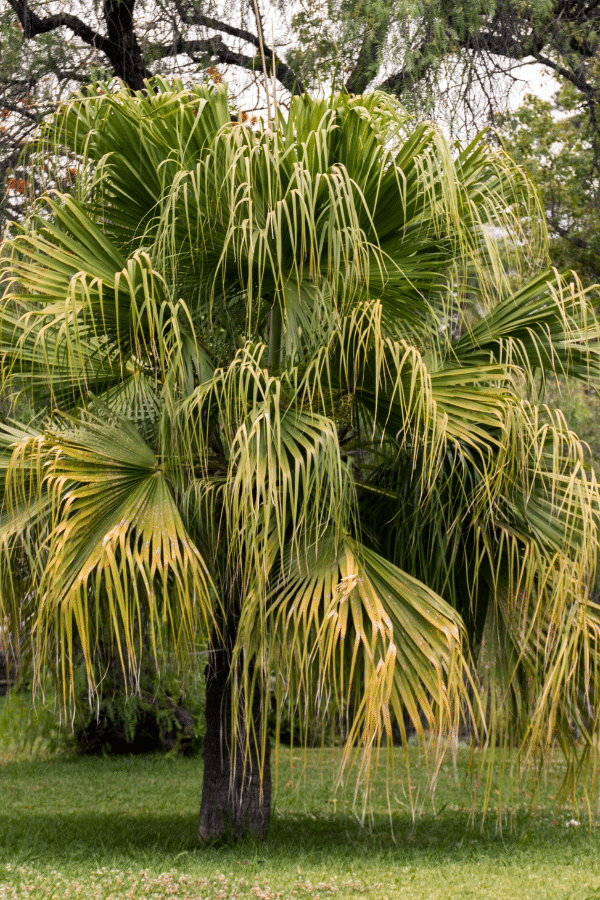
Propagating Chinese Fan Palm
When your Chinese Fan Palm has undergone moderate growth and has become a medium-sized potted plant, you may begin to propagate it. Search for a sucker leaf that is at least 12 inches tall. Using a clean, sharp blade or shears, cut the sucker away from the mother plant. Next, prepare a medium-sized container filing it with one part perlite or sand and two parts potting mix. Place the sucker into the mix, lightly tamp, water, and cover the pot with a plastic bag. Keep the new plant out of direct sunlight until it develops roots. A rooting hormone is not necessary but may be beneficial in helping it grow faster.
Chinese Fan Palm Toxicity
The Chinese Fan Palm is a non-toxic indoor plant, making it a great houseplant if you have pets or children.
Toxicity to Humans
Chinese Fan Palms are non-toxic. However, this tree has thin leaves with sharp barbs that can cause skin injury when not handled with care. Be cautious of this when coming into contact with them.
Toxicity to Cats & Dogs
Chinese Fan Palms are non-toxic to pets.
Chinese Fan Palm Problems
Chinese Fan Palm Leaves Turning Yellow
Discoloration of leaves is the most common sign of nutrient deficiency. The most common nutritional deficiency, potassium (K) deficiency, presents itself as extensive leaflet tip necrosis on the oldest leaves. Affected leaves may show orange-yellow discoloration or they may remain green. Regular fertilization with granular palm fertilizer will gradually eliminate this problem and prevent its occurrence.
Chinese Fan Palm Leaves Turning Brown
Fronds on the trunk below the crown slowly transition to brown after the nutrients have been exhumed. After the fronds have become completely browned, they may be trimmed.
Chinese Fan Palm Diseases
Chinese Fan Palms are not prone to disease. However, this plant can struggle with various nutrient deficiencies, with potassium (K) deficiency being the most common.
Chinese Fan Palm Pests
Chinese Fan Palms generally don’t have any serious issues with pests or diseases. However, these palms are susceptible to scale insects and spider mites, which can potentially kill a plant. Insecticidal soap or neem oil spray can be an effective treatment to treat infestations.

